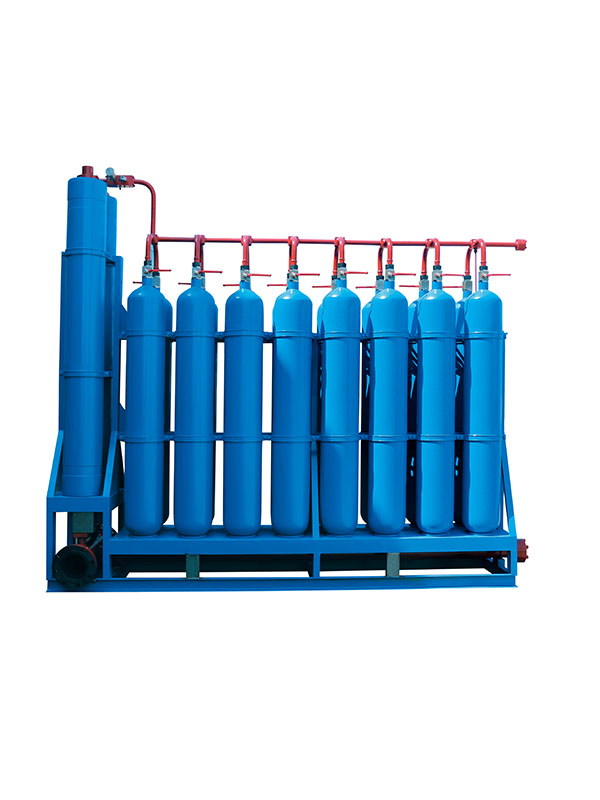Hydraulic Components
The function of the component is to convert the mechanical energy of the prime mover into the pressure energy of the liquid, which refers to the oil pump in the hydraulic system, which provides power to the entire hydraulic system. The structural forms of hydraulic pumps generally include gear pumps, vane pumps and plunger pumps. The function of the actuators (such as hydraulic cylinders and hydraulic motors) is to convert the pressure energy of the liquid into mechanical energy, and drive the load to perform linear reciprocating motion or rotary motion. Control elements (ie, various hydraulic valves) control and regulate the pressure, flow and direction of liquids in hydraulic systems. According to the different control functions, hydraulic valves can be divided into pressure control valves, flow control valves and directional control valves. Pressure control valve is further divided into relief valve (safety valve), pressure reducing valve, sequence valve, pressure relay, etc.; flow control valve includes throttle valve, regulating valve, diverter collecting valve, etc.; directional control valve includ
 es check valve, Hydraulic control check valve, shuttle valve, reversing valve, etc. According to different control methods, hydraulic valves can be divided into on-off control valves, fixed value control valves and proportional control valves. Auxiliary components include oil tank, oil filter, oil pipe and pipe joint, sealing ring, pressure gauge, oil level oil temperature gauge, etc. Hydraulic oil is the working medium that transmits energy in the hydraulic system. There are various types of mineral oils, emulsions and synthetic hydraulic oils.
es check valve, Hydraulic control check valve, shuttle valve, reversing valve, etc. According to different control methods, hydraulic valves can be divided into on-off control valves, fixed value control valves and proportional control valves. Auxiliary components include oil tank, oil filter, oil pipe and pipe joint, sealing ring, pressure gauge, oil level oil temperature gauge, etc. Hydraulic oil is the working medium that transmits energy in the hydraulic system. There are various types of mineral oils, emulsions and synthetic hydraulic oils.The hydraulic system is mainly composed of five parts: power element (oil pump), executive element (oil cylinder or hydraulic motor), control element (various valves), auxiliary element and working medium.
1. The function of the power element (oil pump) is to convert the liquid into hydraulic energy by using the mechanical energy of the prime mover; it is the power part of the hydraulic transmission.
2. Actuator (cylinder, hydraulic motor) It converts the hydraulic energy of the liquid into mechanical energy. Among them, the cylinder performs linear motion, and the motor performs rotational motion.
3. Control components include pressure valve, flow valve and directional valve. Their function is to steplessly adjust the speed of the hydraulic motor according to the needs, and to adjust and control the pressure, flow and flow direction of the working fluid in the hydraulic system.
4. Auxiliary components other than the above three parts, including pressure gauge, oil filter, energy storage device, cooler, pipe fittings {mainly include: various pipe joints (flare type, welding type, ferrule type, sae flanges), high-pressure ball valves, quick-change joints, hose assemblies, pressure measuring joints, pipe clamps, etc., and fuel tanks, etc., are also very important.
5. The working medium refers to OEM Diaphragm Accumulator the hydraulic oil or emulsion in various hydraulic transmissions, which realizes energy conversion through oil pumps and hydraulic motors.
Piston accumulator station and nitrogen cylinder group
Ningbo Chaori Hydraulic Co .,Ltd. is located in National AAAAA scenic resort Xikou town,Fenghua, Ningbo.The company covers an area of 18000 square meters, and has been equipped with perfect manufacturing machines and detecting instruments. lt passed the lSO9001-2000 certification in 2000,and had the important certificates and licenses, including the Special Equipment Designing and Manufacture License issued by General Administration of Quality Supervision ,Inspection and Quarantine, of China,ASME manufacture certificate of pressure vessel ,and EU CE certificate. The company took part in the establishment of accumulator type national standard.

 English
English 中文简体
中文简体





